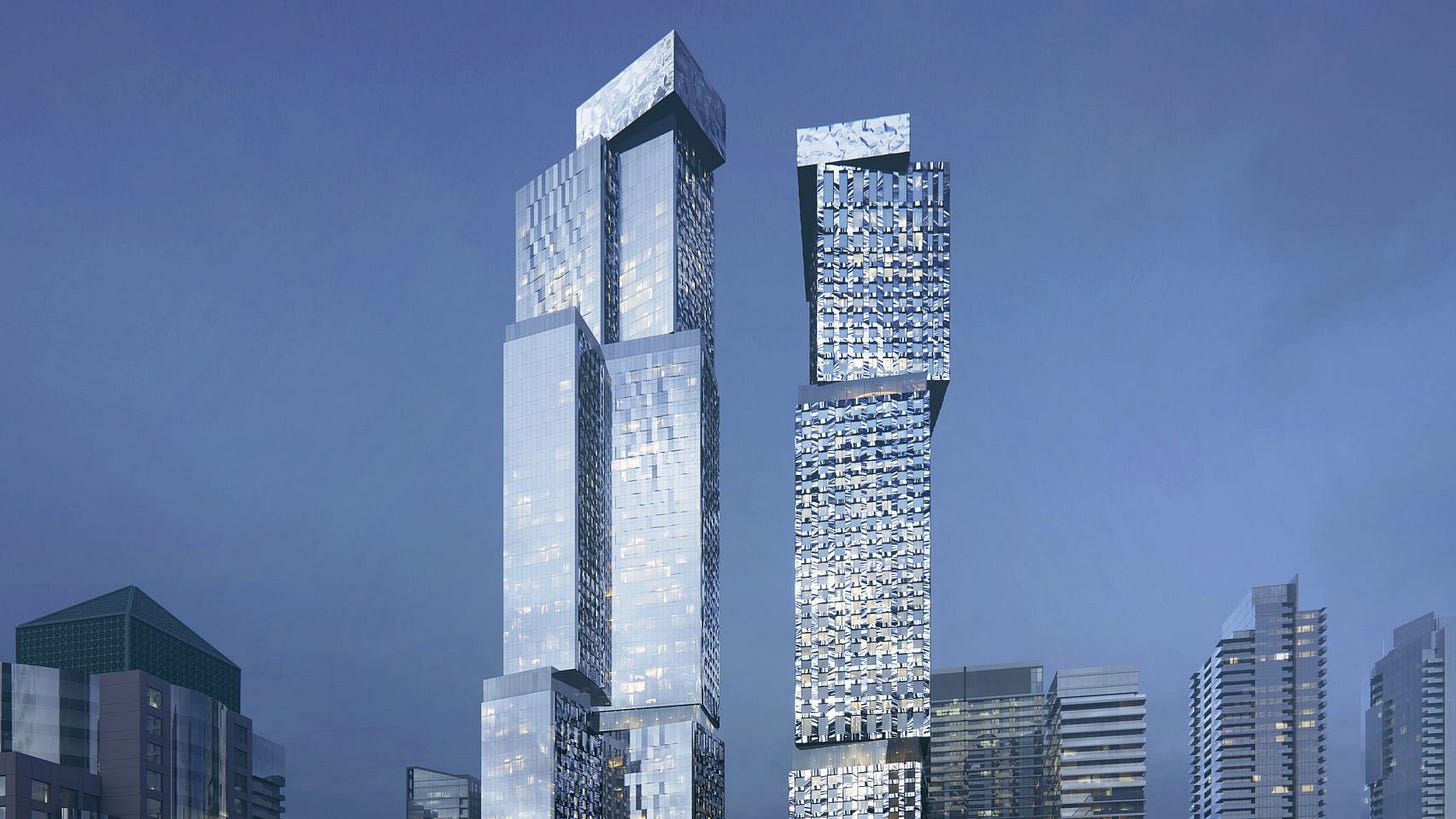A Gehry in every ward
City Hall Watcher #196: Spencer Kelly looks at how much Toronto needs to grow, plus more endorsements, Parkside Drive's speed camera data, and more!
Hey there! Hope you enjoyed your turkey and/or turkey alternative.
Since I’m still nursing a little food coma, I’m turning over the bulk of this week’s issue to Spencer Kelly, a local software developer who has been doing some analysis on how much Toronto would need to grow — and where all that growth could go — to accommodate our growing population.
It’s a timely piece, given there are just 13 days until the election.
I’ve also got some updates to the ENDORSEMENT MATRIX and a quick look at speed camera data. If you were wondering if all those media stories about speeding cars on Parkside Drive had led to a reduction in speeding cars, the answer is, well, no.
A quick plug: on Wednesday, October 19, I’ll be on a panel organized by the fine folks at IMFG Toronto at UofT, talking about the implications of the new strong mayor powers. It’s a free event with both in-person and virtual attendance options. Hope to see you there!
— Matt Elliott
@GraphicMatt / graphicmatt@gmail.com / CityHallWatcher.com
Read this issue on the web / Browse the archives / Subscribe
Next term, Toronto will welcome 80,000 new people — it’s Council’s job to make sure there are enough homes

Text and visuals by Spencer Kelly
Increasingly, it occurs to me how little I understand this city. I confuse Queensway and Queens Quay. I’ll say a thousand when it’s a million. There are always more “Yorks” than I remember. I look up at a skyscraper, blink my eyes, and wonder how they don’t fall down. This city has a way of slipping past me.
It’s slipping fast. Toronto is expected to grow 7% over the next ten years — about 20,000 people per year. So City Council, this term, is expected to house 80,000 new people.
That’s approximately two SkyDomes worth, or a whole Peterborough, over four years.
On October 24, Toronto will elect 25 councillors whose wards have near-equal populations. Toronto, however, is not growing very evenly. Here’s a look at which wards are doing the growing:

This rate of growth is impressive, but it’s not really anything new.
I’m 37. This will be my eleventh Toronto election. When I was in diapers, Mayor Art Eggleton moved in about 20,000 people annually. So did Mayor June Rowlands, and Mayor Barbara Hall. When I was in high school, Mayor Mel Lastman and Mayor David Miller also found the room. The population line wobbles if you look closely, but zoom out, and Toronto has just been doing this relentlessly:

So for the next Council term, these 80,000 new people are basically a sure thing. If we build zero housing, the population growth will still come — they’ll just need to squeeze into fewer homes, and their rents will be higher.
It doesn’t need to be this way. Imagine if, on election night, the new Council gets together, dims the lights, and all 25 ward councillors agree to each build a clone of the Frank Gehry towers in their ward.
With 25 Gehry tower projects built, at 2,000 units each, that would basically do the trick. Housing crisis averted. Each ward would increase in population by 3%.
Who knows, though? Suppose some councillors did not agree to this.
In that scenario — which is basically our status quo — these new people would get funnelled into a small number of wards, making for dramatically uneven population growth.

As it stands, Toronto’s plan is to direct high-density developments to areas near transit stations, but six of our wards don’t even have one of those. (When the Scarborough RT shuts down, the number will increase to seven.)
Still, voting for housing is complicated. Our councillors can’t pick condo developments. The mayor can’t either. Some pro-housing councillors are watching their ward’s population actually decline. A lot of power is found in committees, the planning staff, and at the provincial level. Individual developers call a lot of shots, too. There are a ton of characters in this drama.
Adding to the challenge, most large housing projects take two terms to create. Many projects completed this term were green-lit during Rob Ford or David Miller’s time in office:

The challenges with building enough housing aren’t always readily apparent. This election, we could elect 25 enthusiastic pro-housing councillors and still watch development quietly clog up behind the scenes. Maybe City staff burn out. Maybe the permitting process gets too convoluted — or perhaps we hear something about inflation? Our housing bottlenecks can be subtle and weird.
The good news is that the data is all public, and we can see how much housing is being built, and how much is being approved, for any year.
If Toronto’s 80,000 new residents live with one other person, we’ll need to build 40,000 units every term to stay above water:

Just imagine what that means for the city and for the Council we’ll elect. Two SkyDomes full of people. Every single one needs a place to eat breakfast, do laundry, and get groceries. They need a bench to sit on, after a long day.
For these people, the slate of councillors elected on October 24 will determine which parts of their lives are easy, which are a struggle, and which parts are a horror.
I have a million small grievances with city services, but I’m prepared to fully ignore them in this context. Instead, I will vote for anyone excited and prepared to meet the practical needs of these 80,000 new people. I’ll be voting for anyone who considers it a career failure to see these people coming, and shrug.
Spencer Kelly is a software developer in Toronto. Follow Spencer on Twitter at @spencermountain.
Endorsement Matrix: Revolutions
The world-famous Council Endorsement Matrix has been updated.





